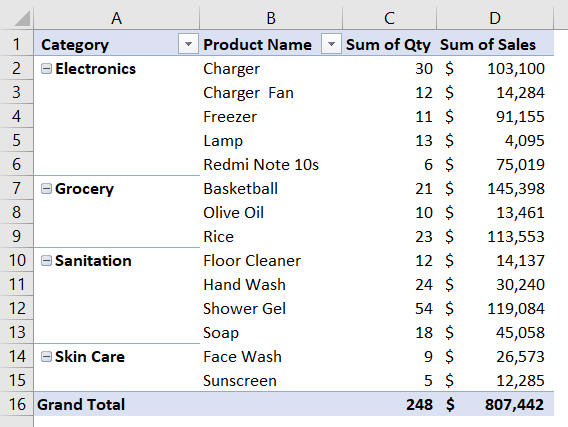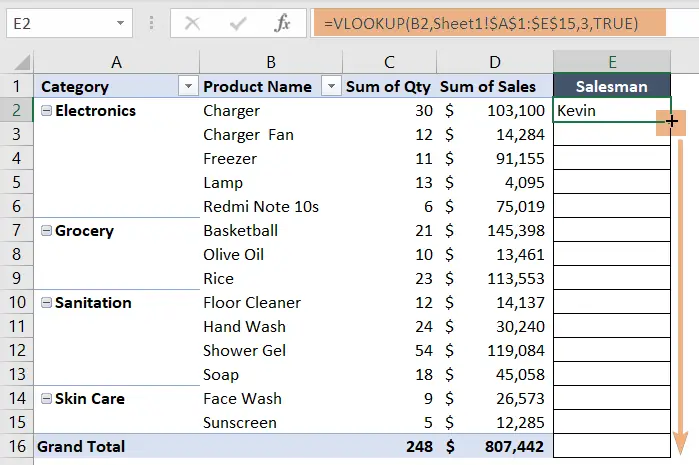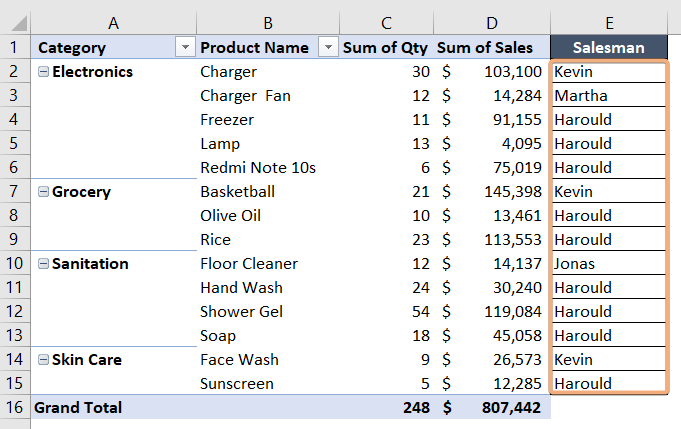
VLOOKUP function and PivotTable feature, form a powerful synergy for streamlined data analysis. VLOOKUP, a versatile lookup function, excels at precisely retrieving specific information from vast datasets. When combined with Pivot Tables, which offer dynamic data organization and summarization, these tools become a formidable force in navigating and gaining insights from complex data sets. In this article, I added a step-by-step approach to using VLOOKUP from the Excel Pivot Table. So, let’s start.
Table of Contents ToggleA VLOOKUP function is a powerful tool in spreadsheet software, commonly used in Microsoft Excel and Google Sheets, to search for a specific value in a table and retrieve related information. It stands for “Vertical Lookup” and is particularly useful for large datasets.
=VLOOKUP(lookup_value, table_array, col_index_num, range_lookup)

We have a dataset to insert a Pivot Table. Then, I will apply a VLOOKUP formula referring to the Pivot Table.
To create a Pivot Table, select the range and go to Insert tab > PivotTable dropdown > From Table/Range option. Then, confirm the range and location. Now, arrange the Pivot Table.

In the Pivot Table, we have a sales report summary. There is a list of products with their category. Additionally, the quantity and sales according to each product.
Now, I will add another column to show the names of the salesman from the source data.
To insert a formula with VLOOKUP function, follow the steps below:


Finally, you will see the names of the salesman in the inserted column using the formula.
In conclusion, the combination of Excel’s VLOOKUP function and PivotTable feature provides a robust toolkit for efficient data analysis and retrieval. VLOOKUP offers a quick and precise way to search for specific values within a dataset, while PivotTables enables dynamic organization and summarization of complex data. In this article, I have provided a guideline to create a VLOOKUP formula from the Pivot Table. Besides, I have explained the basic VLOOKUP formula. So, you can add VLOOKUP from the Pivot Table by going through this article.
In Excel, the term ‘pivot formula’ does not refer to a specific function but is commonly associated with the creation of pivot tables. Pivot tables are a powerful feature that enables users to dynamically analyze and summarize data. To create a pivot table, select your data, go to the Insert tab, and choose PivotTable. Arrange your data by dragging fields into the Rows and Columns areas, and analyze them by placing fields in the Values area. Understanding how to use the PivotTable tool is essential for efficient data analysis and reporting in Excel.
To use the VLOOKUP formula in Excel, follow this syntax: =VLOOKUP(lookup_value, table_array, col_index_num, [range_lookup]). Specify the value to search for, the data range, the column number to extract data from, and optionally, whether to allow approximate matches. For example, =VLOOKUP(“ProductA”, A2:C10, 2, FALSE) finds “ProductA” in the first column of A2:C10 and returns the corresponding value from the second column. VLOOKUP is a powerful tool for data analysis and retrieval in Excel, making it easy to extract information from large datasets.
To look up data from a PivotTable in Excel:
By following these steps, you can easily look up and retrieve specific data points within a Pivot Table in Excel.